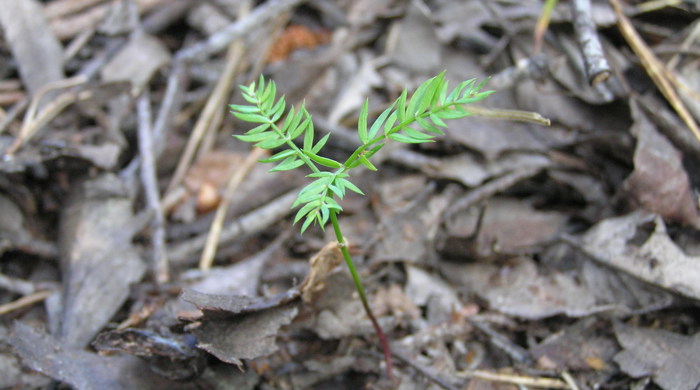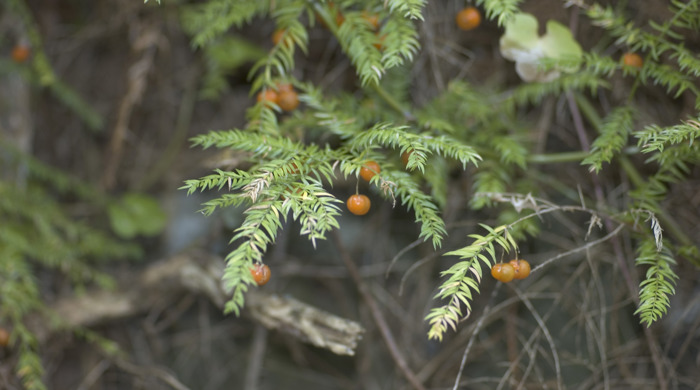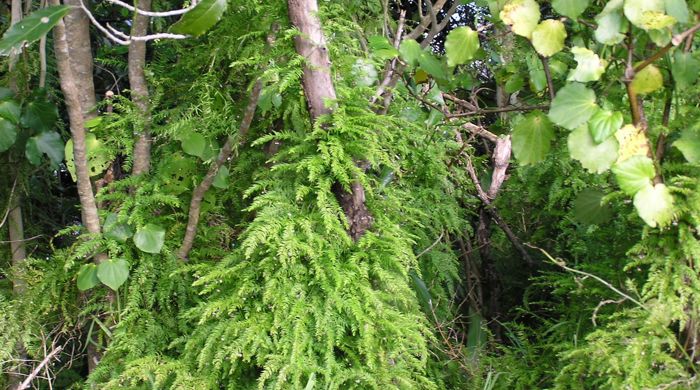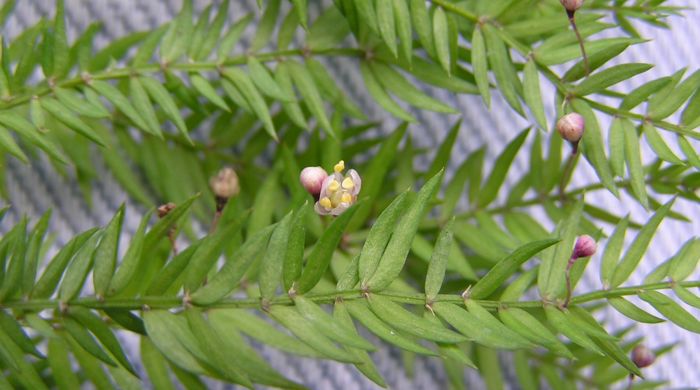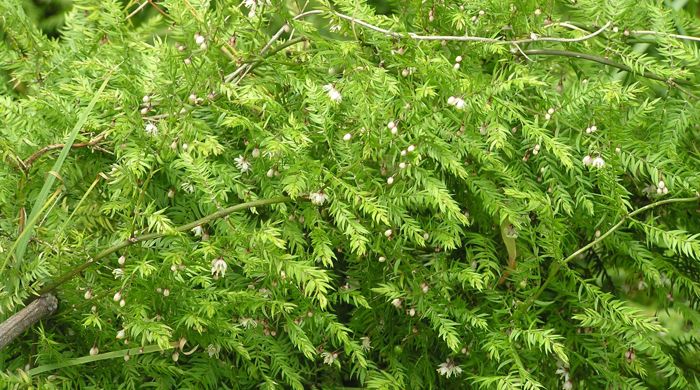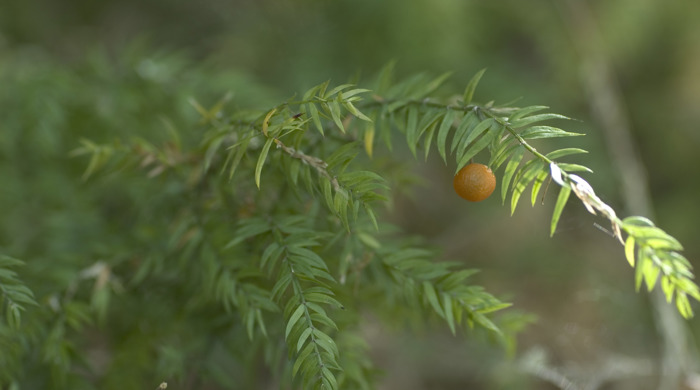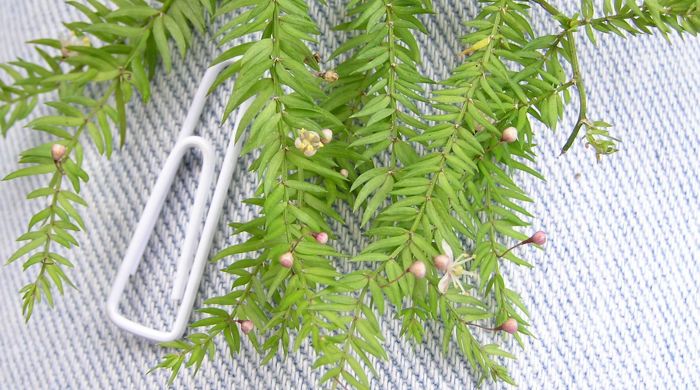Asparagus scandens
Climbing asparagus
Family: Asparagaceae
Origin: South Africa
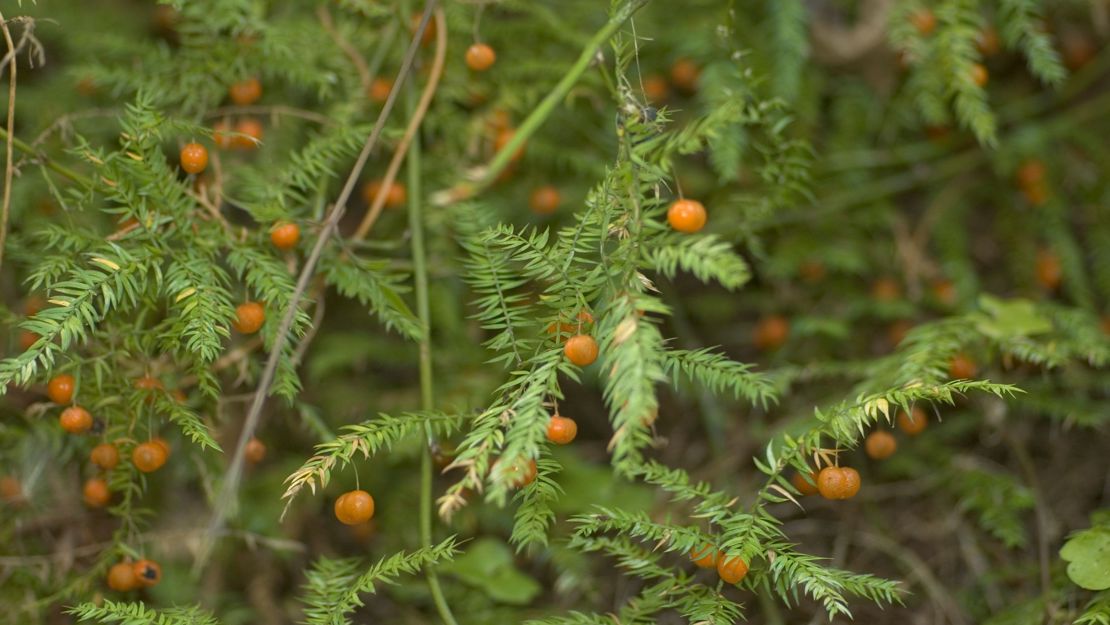
Regional Pest Management Plan (RPMP) status
- Aotea — Eradication
- Whole region — Sustained control
- National Pest Plant Accord Species
- Waitākere Ranges Heritage Area priority status
General description
Scrambling or climbing perennial. Roots are tuberous and fleshy. Stems are < 2 m long, green and much branched. Leaves are scale-like, thin and dry. Cladodes are leaf-like, usually 3 per node and spreading in one plane. Flowers are white and solitary. Berry is spherical and red.
What you need to know
To help protect our environment:
- You must not breed, distribute, release or sell climbing asparagus. As climbing asparagus is a National Pest Plant Accord species, these restrictions apply within the Auckland region and across the whole of New Zealand.
- You must not plant climbing asparagus within the Auckland region, unless you are transferring an existing plant on your land to another location within the boundaries of the same property.
- You must destroy any climbing asparagus on land that you occupy if it has been planted in breach of the above rules and you are directed to do so by an authorised person.
- If you occupy land within the buffer area of a park where climbing asparagus is being managed, and Auckland Council has carried out initial destruction of climbing asparagus on that land, you must undertake follow up destruction of all climbing asparagus on that land. View a map of park buffers where this applies. To find out more about how we’re protecting Auckland’s parkland from pest plants, visit our pest plant buffer pages.
Auckland Council will control climbing asparagus at all sites within the Aotea/Great Barrier Island group where it is known to occur.
If you see climbing asparagus anywhere on Aotea/Great Barrier Island group, please report it to Auckland Council at pestfree@aucklandcouncil.govt.nz.
Habitats
Forest, shrublands, can grow as epiphyte, forest margins, wasteland, scrub, hedgerows.
Dispersal
Seeds dispersed by birds. Vegetative spread from tubers.
Impact on environment
Smothers native vegetation and prevents seedling establishment. Reduces native plant abundance and species richness and facilitates weed invasion. May increase erosion through canopy loss.
Control
Site Management
Cut and pull vines away from desirable trees and native plants before foliar spraying. Follow up treated areas 3 times per year. Encourage natural regeneration of native plants or replant treated areas where possible after 2-3 treatments to establish dense ground cover and minimise reinvasion.
Recommended approaches
Do not attempt to undertake control of this species on Aotea/Great Barrier Island group. Please report to Auckland Council if seen on Aotea/Great Barrier Island group.
Physical control
Method: Dig out.
Plant parts requiring disposal: Tubers, rhizomes and seeds.
Disposal options: Rot tubers, rhizomes and seeds in covered water barrel or remove to greenwaste or landfill.
Biocontrol
Biocontrol is currently not available for this species.
Community agrichemical control recommendations
No qualifications: Foliar spray with 200ml glyphosate green per 10L of water.
Certified Handler/Experienced agrichemical user: Foliar spray with 200ml glyphosate green per 10L of water and 10ml penetrant.
Do not add penetrant when spraying against tree trunks.
Caution: When using any herbicide or pesticide please read the label thoroughly to ensure that all instructions and safety requirements are followed.
